(for
more ship information, go
to Naval
History Homepage
and
type name in Site Search)
Introduction
This
monograph was prepared for Derek
Banham
to assist him in providing
information to the Imperial War
Museum in connection with an
Exhibition to be held in 1996.
It was used by him for this
purpose but otherwise I wish to
retain the Copyright. In
particular it relates to the
deployment of ships of this
Class and gives details of
factors which affected the
deployment of RN ships in the
Dutch East Indies and on the
East Indies Station after the
end of hostilities with Japan in
August 1945.
An
Appendix gives some information
about the deployment of LOCH
Class Frigates and has been
prepared from the research into
this type of ship using
information held in the Naval
Historical Branch, Ministry of
Defence and the Public Record
Office as well as by
correspondence and discussions
with those who served in this
Class of ship during 1945 and
1946. The opinions expressed are
my own.
Political
Background
An
understanding of the political
situation extant in the Dutch
East Indies when the Japanese
surrendered on 15 August 1945 is
most important if the activities
of British warships in that area
are to be fully appreciated. An
agreement between the British
and US Governments had been made
to transfer a large part of this
extensive area then commanded by
General Macarthur to the British
South East Asia Command. As a
result Britain had significant
extra responsibility which would
necessitate large scale
amphibious operations to free
the rich and very densely
populated islands in the Dutch
East Indies. The military and
naval forces available to
Admiral Mountbatten were
insufficient to undertake such
an operation for many months.
Within the area of 55,000 square
miles there were known to be at
least 60 million Indonesian and
Chinese as well as 75,000
military and civilian Japanese
occupation forces. More
importantly there were also many
thousands of allied prisoners of
war and about 60,000 Dutch
nationals interned by the
Japanese in 1942. Many of them
were women and children. The
terrain within the islands of
the Dutch East Indies is largely
jungle and communications were
thus difficult. Operations to
disarm Japanese forces were seen
to present many problems. The
situation was made more complex
during the week immediately
before the surrender by a
Japanese announcement of '
Indonesian independence' A
proclamation signed by the
Indonesian leaders, Dr. Soekarno
and Dr Hatta
on 17 August had declared
'transmission of authorities and
so on will be executed
accurately and in the shortest
possible time.' Within a few
days this was followed by the
announcement of a 'legalised
Constitution for the Republic of
Indonesia' and the appointment
of Dr Soekarno
as President. A 'National
Committee' was also established.
The directives issued by the
newly declared authorities to
the population to be 'calm,
quiet, well disciplined and
good' had little value. The
indigenous population were
totally determined to do all
that they could to prevent any
re-establishment of Dutch
colonial rule.
The
lack of sufficient man-power and
ships made impossible the
immediate landing of an allied
force in Java and Sumatra which
could effectively deal with this
situation. As a matter of
expedience it was therefore
necessary to place the
responsibility for the
maintenance of law and order in
the hands of the Japanese
commanders. They were also
charged with the task of
ensuring the safety of prisoners
of war and internees. The
nationalists were able to obtain
vast quantities of Japanese arms
and transport and carried out
widespread insurrection.
British
forces landed in Batavia on 29
September and the British
Commander Lieut. General Sir
Philip Christiansen declared the
next day that he would have
talks with Dr. Soekarno
with whom the Dutch refused to
have any dealings. Within a few
days the Republicans had seized
control of Sourabaya
and Bandoeng
on the island of Java. By the
end of October bands of hot
blooded young Indonesians had
ambushed and murdered many small
groups of British troops and
fighting became more bitter and
intense. Months of confrontation
passed before discussions
between the British and
Netherlands Governments took
place.
It
was in this environment that
LOCH Class frigates were
required to assist in
Repatriation of Prisoners of War
and civilian Internees (RAPWI).
Basically the two Governments
agreed that until law and order
was restored any negotiations
between the Dutch and the
Indonesian leaders would be
impossible. In the House of
Commons the Foreign Minister,
Ernest Bevin, reiterated the
fact that the only purpose of
British forces was to carry out
rescue work and nothing else.
Preparation for Foreign Service.
Before
sailing for the Far East all
ships nominated for service with
the East Indies Escort Force
underwent a refit. Changes were
needed to provide an increased
defence against aircraft as they
posed the greatest threat,
rather than submarines as in the
Atlantic. Four 'Oerlikon'
or 'Bofors'
gun mountings were installed on
the quarterdeck to give
additional protection.
Improvements were also made to
ventilation and communications
arrangements. This work was done
mostly in commercial shipyards
and took about six weeks in most
cases.
Outward
Passage
Most
ships proceeded independently to
Trincomalee
but in a few instances they
escorted other vessels including
the Monitor HMS ROBERTS
and some Motor Minesweepers as
described in the Appendix. Ships
of this Class which arrived
during August 1945 took part in
preparatory exercises for
Operation ZIPPER, the assault
landings on the west coast of
Malaya. These exercises included
use of an Ex Italian submarine Only
one of the South African LOCH's.
HMAS NATAL went to the
East Indies and was deployed
briefly at Singapore for escort
and patrol duties in the Malacca
Straits.
Ships
Nominated for Duty with East
Indies Escort Force
The
following table lists those LOCH
Class frigates deployed to join
the East Indies Escort Force
after the end of hostilities
with Germany in May 1945. It
shows the names of the ships in
the sequence of their departure
for foreign
service and indicates
date of return to UK to pay off.
Two ships remained on the East
Indies Station for some years
before being relieved by
modernised LOCH Class in 1954.
See Appendix for details
|
Name
|
Date
Left UK
|
Date
Left Duty
|
|
|
|
|
|
NATAL
(SANF, ex-Loch Cree) *
|
26/05/45
|
15/11/45
|
|
LOCH
RUTHVEN
|
30/06/45
|
04/03/46
|
|
LOCH
LOMOND
|
05/07/45
|
12/03/46
|
|
LOCH
KATRINE
|
08/07/45
|
/04/46
|
|
LOCH
QUOICH
|
08/07/45
|
/04/53
+
|
|
LOCH
GORM
|
15/07/45
|
28/05/46
|
|
LOCH
MORE
|
17/07/45
|
/06/46
|
|
LOCH
GLENDHU
|
21/07/45
|
9/11/53+
|
|
LOCH
CRAGGIE
|
24/07/45
|
07/07/46
|
|
LOCH
TARBERT
|
27/07/45
|
/04/46
|
|
LOCH
SCAVAIG
|
28/07/45
|
17/06/46
|
|
LOCH
FYNE
|
11/08/45
|
13/03/46
|
|
LOCH
KILLISPORT
|
23/08/45
|
04/04/46
|
|
LOCH
INSH
|
25/08/45
|
/03/46
|
|
LOCH
ECK
|
26/08/45
|
07/06/46
|
|
LOCH
ACHRAY
|
28/09/45
|
06/46
|
Notes.
*
SANS NATAL joined the EIEF
after return to South Africa
in June 1946.
+
indicates ships retained on
East Indies Station after
April 1946.
Morale
After
the end the European war there
was a considerable lack of
enthusiasm by many members of
Ship's companies who were
serving for 'Hostilities Only'
or for whom the Period of
Engagement had expired since
September 1939.The prospect of a
long period of service in the
Far East had no attraction
especially to those who had
already spent several years at
sea in the dangerous and most
uncomfortable environment of the
North Atlantic defending convoys
vital to victory over Germany.
The majority of the ships
companies of LOCH Class
frigates, including some RNVR
officers fell into this
category. The many accounts
given indicate without any doubt
that the maintenance of morale
was one of the most important
considerations for Commanding
Officers at this time. The
Captain of LOCH KILLISPORT
graphically describes his
particular situation in an
article in THE NAVAL REVIEW
which he wrote some years after
the war. In this case he was
able to identify some of the
troublemakers and arrange for
changes to be made.
The
sudden end to hostilities with
Japan made the situation more
volatile and great efforts were
needed by Officers and Senior
ratings to take the lead in
maintaining a high standard of
morale. It was only by example
that this situation could be
achieved. The 'Release System'
to govern demobilisation of
personnel had been devised to
ensure the basic premise of
'first in - first out' would be
followed irrespective of the
part of the world in which
personnel were serving. However,
like most bureaucratically
administered schemes it's
implementation was not easily
achieved and caused further
discontent. The transition from
a wartime
to a peacetime Service was not
going to be easy. The
introduction of pre-war
practices had to be carefully
balanced against the actual
circumstances facing each ship.
One
compensating factor did play a
significant part in the
adjustment of ships' companies
to this situation. They soon
became very aware of the fact
that they were far better off
than those with whom they were
to deal during their stay in the
Far East. The sight of returning
prisoners of war and of civilian
women and children who had
suffered great deprivations made
clear the comparative affluence
of those on board ships. However
shipboard conditions were far
from ideal. Climatic conditions
and some problems in maintaining
a fully adequate diet made life
on board far from pleasant.
Vermin were commonplace despite
energetic attempts to carry out
de-infestation procedures. The
changes made in ventilation were
shown to be quite inadequate and
air-conditioning was an unknown
feature in warships at that
time.
The
extent of the sympathetic
consideration by all on board,
especially to the returning
internees, gives evidence of the
effects of good leadership.
Commanding Officers were
frequently required to make on
the spot decisions which did not
always satisfy the shore
authorities in Singapore no
matter how suitable they were to
the circumstances. The overall
objectives of the Government
policy as declared were achieved
in many most difficult
situations, due largely to the
fact that flexibility was shown
by those directly involved. The
extent of the instability in the
Dutch East Indies was such that
officers and ratings were
required to deal on a daily
basis with dangerous and almost
insoluble situations. The fact
that they did so with much
success should always be
recognised.
Common
features of Service
LOCHS
arriving on the Station in
August 1945 escorted the assault
convoys which landed near Port Swettenham
in September. The troops were
ashore safely these ships went
to Singapore and were later
joined by others which arrived
on Station well after VJ Day.
The Flag Officer Malayan Area
(FOMA) had overall command of
ships detached for duty at
Singapore. The support
facilities were limited until
the Dockyard had been prepared
for use. Any urgent repair work
had to be undertaken by local
commercial facilities or
necessitated return to Ceylon.
The RN dockyard and naval base
at Singapore were not fully
restored for use until 1947.
Japanese PoW
were
extensively employed to assist
in the work.
Ships
of the East Indies Escort Force
were immediately deployed on a
variety of tasks in the Forward
area. Amongst these were:-
Escort of military convoys from Indian ports to Malaya, Burma and in Java.
Patrol duty in the Malacca Straits during which they acted as position markers
since the normal navigation
lights were inoperative.
Duty as Examination ships for inspection cargoes and port entry.
Landings on the west coast of Sumatra at Padang to accept the Japanese
surrender.
Transport
of Embassy Officials and
foreign diplomats to and from
Rangoon, Saigon and Bangkok.
Surveillance
of coastal waters around
Sumatra and Java to prevent
their use by rebels for
transport of arms and
personnel.
Guardship
at ports in Java and Sumatra
to provide communications
facilities and if required to
provide naval gunfire support
to Army units.
Escort of Landing Craft being used to carry RAPWI (Recovered Prisoners of War
and Internees) from
Indonesian islands to Singapore.
Air
Sea Rescue duties in Bay of
Bengal and Gulf of Siam to
deal with any emergency
situation affecting flights to
and from UK.
Inspection of Liberty ships used to transport Japanese troops from the island
of Morotai
back to Japan. (See below)
Individual
Activities
Some
of these ships had individual
experiences out of the normal
pattern described above and are
fully dealt with in the
individual Summaries. Notable
events were:-
Surrender
of the Japanese Garrison on
the Island of Bali (LOCH ECK).
Capture of Japanese Submarine Chasers taken by Indonesian rebels. Japanese
officers were embarked under
guard for this task (LOCH
GLENDHU).
Supervision of scuttling of 2 German submarines(Ul8l
and U682) operated with Japanese
crews and captured at the
surrender of Singapore (LOCH
GLENDHU and LOCH
LOMOND)
Transport of Dutch officials to islands in the Moluccas Islands sited about
500 miles north of Australia.
Two Japanese war criminals were
taken back to Singapore (LOCH
SCAVAIG and LOCH CRAGGIE)
Morotai
Several
thousands of surrendered enemy
troops (SEP) were kept under
guard by the Australian Army on
this island at the northern tip
of the Moluccas. A British Guardship
was stationed to support the
military force. Amongst the
duties of the Senior British
Naval Liaison Officer (Captain
of the the
Guardship)
was the inspection of US Liberty
ships being used to take the
prisoners back to Japan. This
was aimed at controlling the
numbers embarked and
establishing whether the
facilities including fuel were
within the required standards
for this purpose. The numbers
carried often exceeded the
stipulated figure and a total of
4,000 on one ship was
not uncommon. Although good
swimming was possible (with
risks of ear infection) and
Banyans were a regular feature
of the stay there were few
redeeming features of any Guardship
duty at Morotai.
Invitations to play cricket and
tennis with the Australian
Garrison and to use their
canteen facilities were
gratefully accepted but even
these diversions did little to
offset the inevitable boredom of
such a duty. The Australians
were most hospitable and
provided a 'Jeep' and a
Personnel Landing Craft for the
use of the Guardship.
Contemporary accounts also speak
of shooting at bats (Bugis)
and of a trip for a CO in a
Catalina aircraft of the RAAF.
Film shows formed a completely
essential form of relaxation.
Their importance in maintaining
morale is continually emphasised
by accounts of life on board at
all times these ships were on foreign
service. Skin
complaints tended to develop
because of the climatic
conditions and the somewhat
below average diet. All in all Morotai
was a good place to see
disappearing over the horizon.
Conclusion
By
the end of 1946 all LOCH Class
frigates nominated
for transfer to Reserve had
returned to UK. Only LOCH QUOICH
and LOCH GLENDHU remained on the
East Indies Station for
deployment in the Indian Ocean
and Persian Gulf. These two
ships were refitted at Singapore
with docking in Colombo when
needed. They were never
modernised and had no air
conditioning in living spaces.
In due course the two ships were
relieved by modernised LOCH's
and then went into Reserve.
APPENDIX
SUMMARY
OF SERVICE ON EAST INDIES
STATION
Details
for each ship (excluding HMS
Loch Scavaig) are provided in
the chronological order of the
ship's departure from UK for
service in the East Indies.
H.M.S.
L O C H C R E E
Launched
at Wallsend
by Swan Hunter as LOCH CREE but
renamed NATAL in January 1945
after her transfer to the South
African Naval Forces (SANF).
East
Indies Service
Only SANF ship to serve with the East Indies Escort Force. Based at Singapore and deployed on escort and patrol duties in the Straits of
Malacca (Sept 1945). Returned to
South Africa (Nov 1945).
H.M.S.
L O C H R U T H V
E N
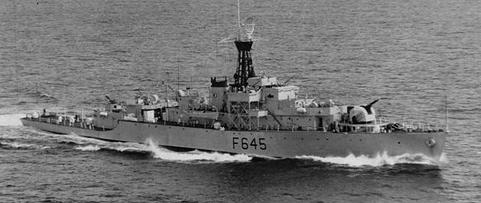
(Bryan
Woodford)
Second of three LOCH Class built by Hills at Bristol.
Launched in
June 1944 by the Duchess of
Beaufort.
Refit
at Bristol in May 1945 and
sailed for Colombo in July.
East
Indies Service
Conmanding
Officer: Lieut. Commander J A Phillips
RN
Operation
ZIPPER - Escort of assault
convoys from Bombay for Malaya
landings (September).
Shipping
Control at Penang (Sept 1945).
Patrol and duty 'Lighthouse' Singapore (October).
Escort of convoys to Bangkok and
other ports (November 1945 and
January 1946)
Guardship and aid
to military forces at Batavia, Sabang
and Palembang (November-
December)
Towed
MMS19 from Trincomalee
to Port Blair, Andaman Islands
(February 1946).
Returned
to UK to pay off into Reserve at
Portsmouth (March).
H.M.S.
L O C H L O M O N
D
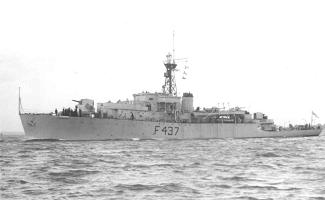
(Mark
Teadham)
First
LOCH built at Dundee by Caledon
SB and completed in November
1944.
Refit
at Milford Haven (May) and
sailed for Colombo (July).
East
Indies Service.
Commanding
Officer:
Lieut. Commander K G Webb
RNR
Operation
ZIPPER - Port Swettenham
landings support (Sept).
Support
to military operations in Dutch
East Indies. Escort
and patrol duties (October).
Patrols
off Borneo and escort duties
from Kuching
and Labuan to Singapore (Nov -
Dec).
Guardship
duty at Sabang
(November).
Indian Ocean escort from Vizgapatan (December).
Escort
of Landing Craft from Semarang
to Singapore with LOCH CRAGGIE
(February 1946).
Escort
of Japanese manned German
submarine U181 with LOCH GLENDHU
for scuttling in Straits of
Malacca (February)
Returned
to Portsmouth to pay off into
Reserve (April 1946).
H.M.S.
L O C H K A T R I
N E
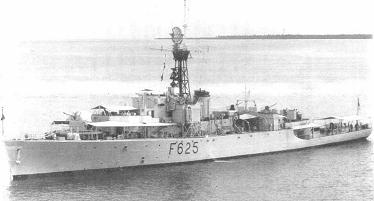
later
as HMNZS Rotoiti (Gerry
Wright)
Third
LOCH built in Leith by Henry
Robb.
Refitted
in Londonderry for service with
East Indies Escort Force (June -
July 1945)
East
Indies Service
Commanding
Officers:
Lieut. Commander Bidwell
RNR
Lieut.
Commander A C D Leach DSC
RN
Took
passage with LOCH QUOICH
(July 1945).
Escort of assault convoys for Operation ZIPPER (September 1945).
Present at Singapore for re-occupation (September 1945).
Went
to Bangkok with Officials
(November 1945). Guardship
and Patrols from Batavia and Padang
(December 1945).
East Coast of India patrol and escort (January 1946).
Air-Sea
rescue duty in Indian Ocean.
Relieved LOCH ACHRAY (February)
Sailed for UK in company with LOCH TARBERT.
Paid
off into Reserve at Portsmouth
(April).
H.M.S.
L O C H Q U O I C
H
Second
LOCH completed by Blyth SB and
fitted out at Bolckow's
Sunderland (November 1944). Embarked
party of WRNS during trials in
N. Sea.
Refit
in Londonderry (May - June 1945)
East
Indies Station
Commanding
Officer: Lieut.
Cdr. J E B Healey RNVR
Sailed
for Colombo with LOCH KATRINE
(July 1945),
Escorted
Operation ZIPPER convoys for
Port Swettenham
landing .
(September).
Patrol
and support to military
operations in Dutch East Indies
(October).
Carried
Diplomats to Bangkok (October)
Accompanied
Assault Force to Padang for
formal surrender of Sumatra
(November)
Army
units included Lincolnshire
Regiment and RM landing craft
used. Guardship
at Sabang
(November).
Escorted
Landing Craft carrying RAPWI
from Batavian ports and Bali
(Nov - Dec).
Rescue
trip to Bengkulu (Sumatra) to
collect Dutch doctor but had
been taken by RAF (December.).
Retained on East Indies Station
and based at Trincomalee.
Docking in Bombay (Jan.1946).
Air-sea
Rescue duties in Indian Ocean
off Gwadar
with other Frigates (Jan. -
March)
H.M.S.
L O C H G O R M
Ordered from Harland & Wolff, Belfast.
Fitted out
at Dalmuir.
Refit
at Londonderry for East Indies
service (May to July 1945)
East
Indies Service
Commanding
Officers: Lieut. Commander H
Vernon RNR
Lieut.
Commander TE Edwards RN
Operation ZIPPER escort
duties from Bombay to the
Malacca Straits (August).
Dutch East Indies support and Guardship duties in
Sourabaya
(November).
Transport
of RAPWI from Dutch East Indies
ports to Singapore.
Minor collision with LOCH LOMOND at Colombo (December).
Visits
to Bangkok and Karachi on escort
duties (February 1946).
Carried New Governor of Malaya to visit Christmas Island and Cocos
Group.
Grounded
temporarily on reef and damaged
propeller.
Guardship
at Batavia (March).
Anti-piracy patrols in Malacca Strait (March).
Sailed
for UK to reduce to Reserve at
Devonport (May)
H.M.S.
L O C H M O R E
Second
LOCH built by Caledon SB at
Dundee.
Work-up
at Tobernory
(March 1945).
Refitted
on the Clyde and sailed for Trincomalee
on 17 July 1946.
East
Indies Service
Commanding
Officer: Lieut.
Commander J Raban-Williams
RN
Escort
duties and aid to military
operations ashore.
Bangkok
convoy and returned with LOCH
SCAVAIG as escort to QUEEN EMMA
(October 1945)
Guardship
at Sourabaya
(November).
Visited
Bangkok with stores (January
1946).
Sent
to Bombay after RIN Mutiny with
GLASGOW
(21 February 1946).
Returned
to Singapore (March 1946).
Passage to UK to pay off into Reserve (July 1946).
H.M.S.
L O C H G L E N D
H U
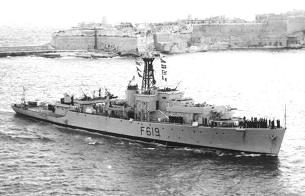
(Mark
Taylor)
Third of the Class built by Bumtisland in a build
time of 270 days.
Refit
at Troon
and sailed to join East Indies
Escort Force (July 1945).
East
Indies Station
Commanding
Officer: Commander HL Hayes OBE
RN
Escorted
Fighter Direction Ship PALOMARES
in tow of tug EARNER from Massawa
to Aden after
fire
damage (August 1945).
Operation ZIPPER convoy defence (September).
Protection of Landing Craft carrying RAPWI to Singapore (October - December).
Guardship
duty at Morotai
in the Moluccas Group (January
1946).
Sinking
of U189 (I501) and U862 operated
by Japan and surrendered at the
end of Japanese War.
Towed
from Singapore by tugs and
scuttled in Malacca Straits
(February).
H.M.S.
L O C H C R A G G
I E
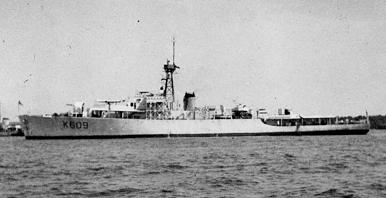
(Mark
Taylor)
First
LOCH built by Harland &
Wolff, Belfast. Fitted
out at Clydebank.
Refit
at Cardiff for foreign
service.
Emergency docking after collision with tug (June 1945).
Passage
to Station (July)
East
Indies Station
Commanding
Officers: Lieut. Commander C S Battersby
RN
Lieut.
Commander Davies RNVR
Oerlikon mountings
fitted at Alexandria (August
1945).
Operation
ZIPPER convoy escort for Malayan
coast landings (September
1945.).
Patrol and escort duty in Malacca Straits.
Carriage of goods and personnel in area.
Air Sea Rescue duty in Gulf of Siam.
Guardship
duty in Batavia (January
1946).
Repair
at Trincomalee
(February).
Relieved
LOCH SCAVAIG at Morotai
(June).
Sailed
for UK with LOCH ECK (July 1946)
H.M.S.
L O C H T A R B E
R T

(Mark
Teadham)
First of the two LOCH Class completed by Ailsa
SB.
Delayed by defects.
Refitted
in Liverpool for foreign
service and sailed for
Colombo in July 1945.
East
Indies Station
Commanding
Officer: Lieut. Commander WS
Thomson OBE RNR.
Deployed
at Singapore with East Indies
Escort Force (September 1945)
Escort
and Patrol duty Support of shore
military operations in Java.
Commanding
Officer Lieut. Commander M E Impey
DSO, DSC RN
Christmas in the Cocos Islands.
Returned
to Trincomalee
(January 1946).
Dutch East Indies Patrol and Support (February - March).
Sailed
from Ceylon to pay off and
reduce to Reserve at Portsmouth
(April).
H.M.S.
L O C H F Y N E
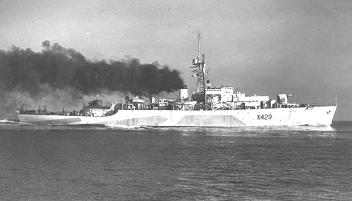
Second of three LOCH Class completed by Bumtisland
SB.
Hull stiffening in December 1944.
Refit at Pembroke Dock (June - August).
East
Indies Station.
Commanding
Officer: Lieut.
Commander R
F J Moberley
RNR
Joined
East Indies Escort Force
(September).
Indian Ocean Patrol and Air Sea Rescue (October 1945 - February 1946).
Passage to UK (March - April).
Reduced
to Reserve at Portsmouth on
arrival.
H.M.S.
L O C H K I L L
I S P O R T
Fourth
of Class built at Belfast and
fitted out at Dalmuir.
Sailed
For East Indies (August 1945).
East
Indies Station.
Commanding
Officer: Lieut. Commander C C
Anderson RN
Escorted
MFV's
from Aden to Colombo on passage
(September 1945).
Collected
RAPWI from Batavia and other
ports for repatriation (October
- November).
Support of operations ashore.
Visits and Guardship
duties included Bangkok,
Batavia,
Semarang,
Sourabaya
and Johore
Baru
- see Note. (December
1945 - March 1946).
Rescue of Dutch official and
family at Grissee
near Sourabaya.
Star
shell fired to prevent any
reprisal action by Indonesian
nationalists (January 1946).
Returned
to Trincomalee
(March).
Passage to Devonport to pay off (March 1946).
H.M.S.
L O C H I N S H
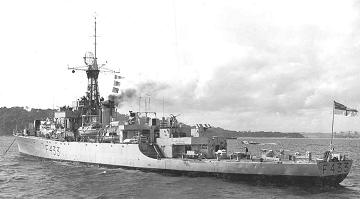
Second
LOCH completed at Leith by
Robb's.
Refitted by ROBB's at Leith.
Joined
East Indies Escort Force in
August 1945
East
Indies Station
Commanding
Officer: Lieut. Commander E M
Skinner RN
Provided
support for military operations
ashore in Java and escort duties
in Dutch East Indies.
Relieved by LOCH QUOICH.
Returned
to UK via East African ports
(May 1946).
Reduced
to Reserve at Devonport (June
1946).
H.M.S.
L O C H E C K
Built
by Smith's Dock at Middlesbrough
in November
Refitted at Bristol for service with East Indies Escort Force.
Sailed
for Colombo (Aug. 1945)
East
Indies Station
Escort
of landing craft carrying RAPWI
from the Dutch East Indies to
Singapore.
Support
of military operations ashore
(October)
Commanding
Officer: Lieut. Commander P J H
Hoare RN.
Relieved
LOCH SCAVAIG as Guardship
at Sourabaya
(February 1946).
Acceptance of surrender of
Japanese forces at Bali. The
senior British representative
was Colonel P Kemp, Royal
Hussars.
Went
to Benoa
and Lambuk
with Mission from Sourabaya
(March)
Collision
with Ex USN Coastguard Cutter
LANDGUARD at Trincomalee
(May).
Returned
to UK with LOCH CRAGGIE and LOCH
DUNVEGAN (July).
H.M.S.
L O C H A C H R A
Y
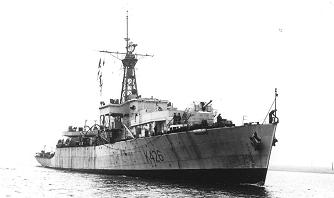
(Noel
Bailey)
Second
and last LOCH built by Smiths
Dock, Middlesbrough.
Completed in February 1945.
Refitted
for foreign
service on the Clyde.
East
Indies Service.
Commanding
Officers: Lieut. Commander CJ
Aldridge RNR
Lieut.
Commander H G Chesterman
DSC RNR
Lieut.
Commander C C Anderson RN (Later
Rear Admiral, CB)
Passage to join East Indies Station (Sept-Oct 1945).
Deployed
at Padang and in Malacca Straits
(Nov-Dec) .
Trincomalee
for Xmas.
Dutch
East Indies support (Jan 1946).
Air
Sea Rescue duty in Indian Ocean
for trooping flights (February).
Relieved LOCH GORM off Gwada.
Replaced
by LOCH KATRINE Malacca Straits
patrol (March).
Returned
to Trincomalee
(April).
Andamans visit
(June) .
Visited Rangoon, Cochin and Penang Batavia.
Collision with LOCH SCAVAIG.
Passage to UK to Pay off (July).
Port
Blair visit as reported by
Captain.
Note:
Visit to Port Blair in the Andamans
with formal ceremony which
provided a chance to accustom a
largely 'Hostilities
Only' complement to the nicety
of requirements. The newly
installed District
Commissioner was given
the full treatment. On
completion the captain decided
to take advantage of the chance
to stretch his legs on a
neighbouring island. As he
described later in an article
this proved
to be more than
memorable. He was unaware that
this island had been chosen as
place of custody for Eurasian
women provided as 'comforts' for
the Japanese occupation forces.
Initially he
encountered two
serenading naked ladies anxious
to resume their activities. They
were rapidly joined
by many others and his
subsequent retreat was made with
little concern for dignity or
for opportunity. His narrative
defies imagination. The ship
sailed quickly since it was
doubtful whether the ship's
company would be quite
as circumspect. Subsequent weeks
of the commission as Guardship
and when
carrying out patrol work in
Javanese and Sumatran ports
presented no similar chances for
them.